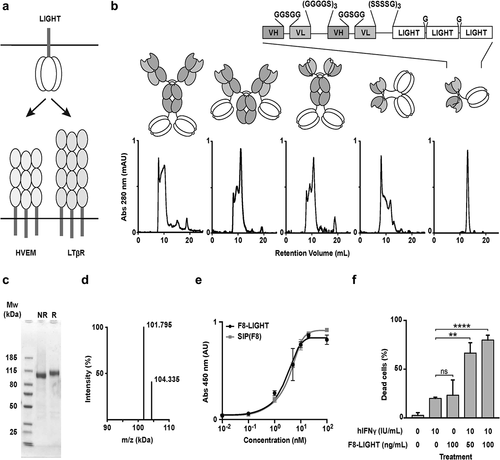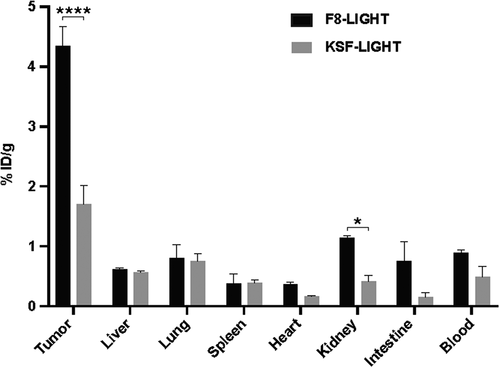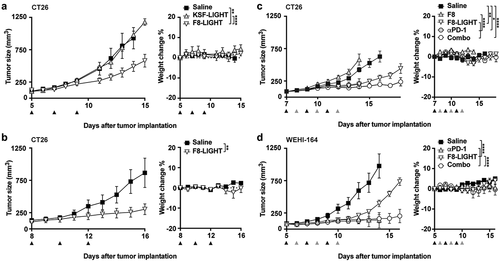Figures & data
Figure 1. In vitro characterization of fusion proteins

Figure 2. Tumor targeting of F8-LIGHT in vivo.

Figure 3. Therapy experiments

Figure 4. Analysis of immune infiltrate

Figure 5. Analysis of tumor composition

Supplemental Material
Download MS Word (3.2 MB)Data availability statement
Data and material are presented in the main text and supplementary information, raw data are available from the corresponding author on reasonable request.
